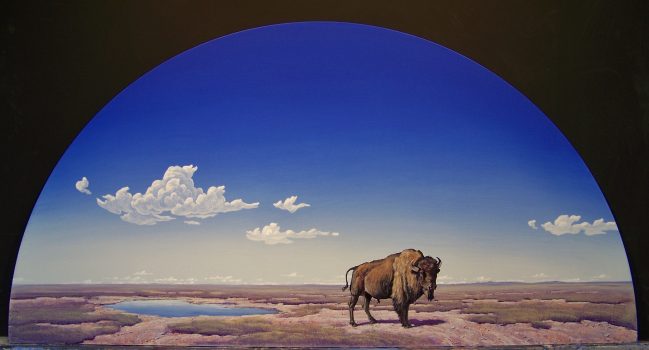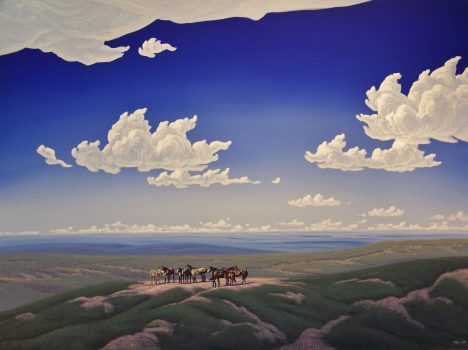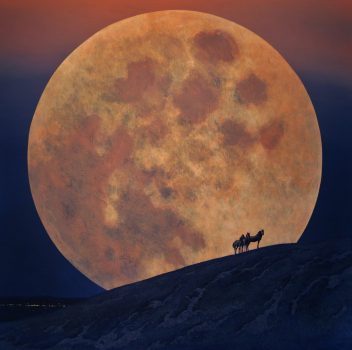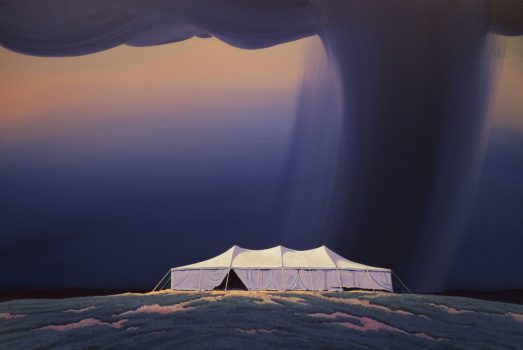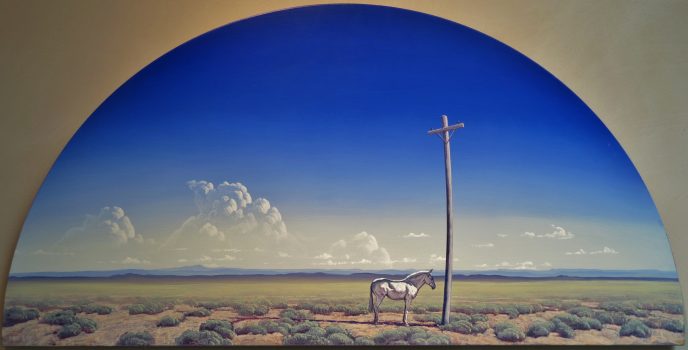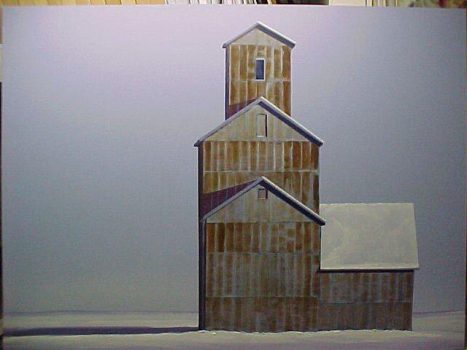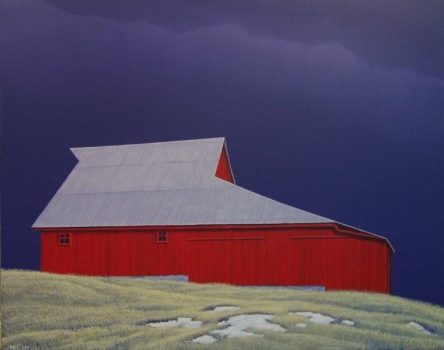
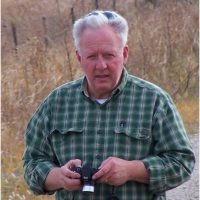
“It isn’t a lonely view, but a reverent one.” P.E.
Early in the pursuit of his art, Phil Epp was influenced by contemporary minimalist artists and color field painters such as Mark Rothko. Their distillation of visual structures, balancing of spaces and colors, and analysis of light in color and color within light attracted him. Even today he admires and feels an affinity for the work of minimalist sculptor Richard Serra, and environmental works like James Turrell’s Roden Crater project. For someone born in Nebraska, and living most of his life in Kansas, with the prairie and open spaces at his aesthetic center, there is a visual logic to this (he has said: “I always had the plains.”) However, even in college, Epp was also interested in earlier Kansas artists, doing research on John Rogers Cox in an art history class. That interest and respect grew, and later blossomed,
not only into a collection of works by artists from his area of the country, but also into an influence on Epp’s own approach to painting. Noted regionalist realist painters such as Thomas Hart Benton and John Stuart Curry, the Wichita based prairie printmakers, and other area artists who were important presences in the late 1920s, 1930s, and in the Works Progress Administration, became important for him. Epp eschews artistic labels, and does not like art, or himself, to be classified by locality, ethnicity, culture, faith, or other tag. His work may be characterized by a certain clarity, a lack – but suggestive ordering mark – of human presence, and often a low horizon line that allows for a dominant, active, and expressive sky. He simply states: “I’m a rural artist.” For him, the true question for any art remains: Is it any good?
Website
http://www.philepp.com
